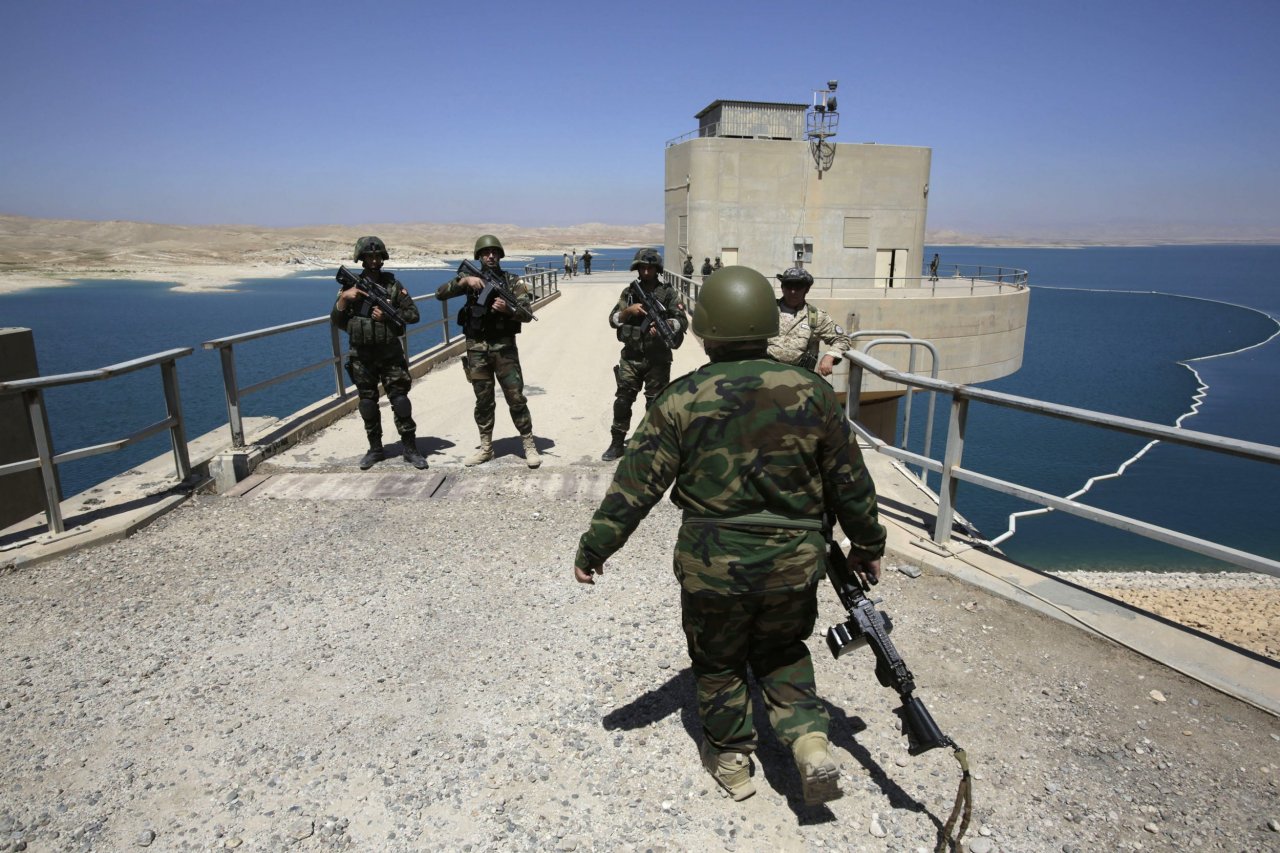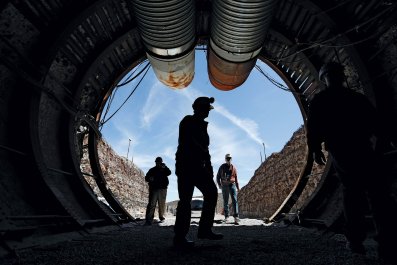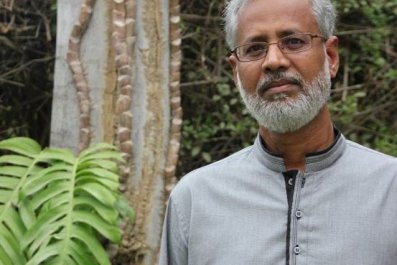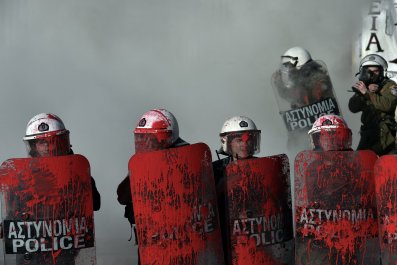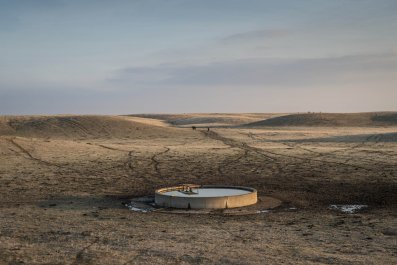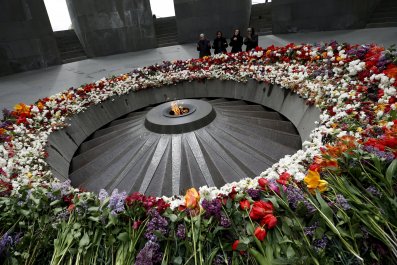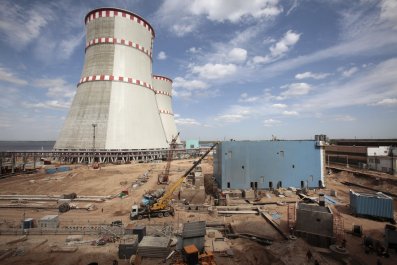The world is at war over water. Goldman Sachs describes it as "the petroleum of the next century". Disputes over water tend to start small and local – for instance, with the sort of protests that drought-stricken São Paolo has experienced this year. But minor civil unrest can quickly mushroom, as the bonds of civilisation snap.
It is often forgotten that the revolution against Syrian president Bashar al-Assad began this way, when youths of the southern Syrian town of Daraa, angry at the local governor's corrupt allocation of scarce reservoir water, were caught spraying anti-establishment graffiti. Their arrest and torture was the final straw for the tribes from which the youths came. It was a very similar story in Yemen, whose revolution began in 2011 in Taiz, the most water-stressed city in that country.
When we think of Syria now, we cannot see far past the threat posed by Islamists. But Isis, in the end, is a symptom of social malfunction. If order is to be restored, we might do better to start focusing instead on the causes. Then we could perhaps look harder for "soft power" solutions – the restoration of governance and basic services, such as electricity and water supply – rather than for hard power ones, such as missiles and bombs.
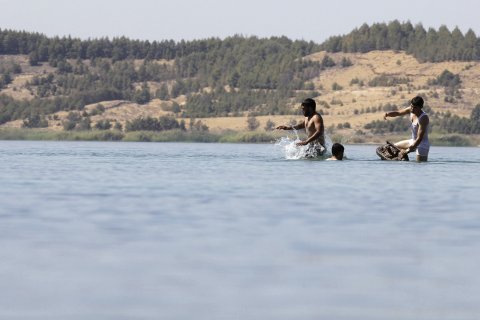
1. THE MESOPOTAMIAN WAR
As Islamic State's leaders work to carve out their glorious new state, they have comprehended that political power in Mesopotamia has always rested on the ability to supply its citizens with water. The prosperity of ancient Nimrud, the 7th-century BC ruins that Isis recently bulldozed because they were "unIslamic", was founded on its irrigation dam across the Tigris. The Sumerian city-state of Ur – the first city, founded in 3800BC – was abandoned by 500BC following a protracted drought and the siltation of the Euphrates.
Isis is headquartered at Raqqah, a mere 40km down the Euphrates from the largest reservoir in Syria, Lake Assad. Raqqah's economy has long depended on the cultivation of cotton irrigated by the reservoir, which was formed by the Russian-assisted construction of the Tabqa dam in 1973, and designed to irrigate some 2,500 square miles of farmland.
Last August, Isis fought fiercely for control of the largest dam in Iraq, across the Tigris at Mosul. Its fighters also took over two other dams across the Euphrates, one at Fallujah, the other at Haditha. In all cases, it took American air strikes to drive them off, and the high value the terrorist group places on Mesopotamia's dams suggests that further offensives against such targets are likely.
Even if Isis leaders in Raqqah succeed in holding one of these key pieces of hydro-infrastructure, however, they do not control the headwaters of either the Tigris or the Euphrates, which rise in Turkey. It is the Turks, who have squabbled for 40 years with their downstream neighbours over use of the rivers, who therefore hold the keys to the long-term future of Isis – and the Islamists know it.
2. TURKEY V ISIS
Last summer, Isis accused the Turkish government in Ankara, headed by Recep Tayyip Erdogan, of deliberately holding back the Euphrates through a series of dams on its territory, lowering water levels in Lake Assad by a record six metres. Isis was apoplectic.
"I pray to God that the apostate [Turkish] government reconsiders its decisions," a spokesman Abu Mosa reportedly said, "because if they do not reconsider it now, we will reconsider it for them by liberating Istanbul."
Turkey's dams have given Ankara a vital hold over Isis's leaders, who, for the present, twitch like puppets on a string. Ankara, it should be said, may not have been wholly responsible for the shrinking of Lake Assad. Local farmers, emboldened by the collapse of governance in Syria, were reported last year to have siphoned off vast amounts of water to irrigate their own cotton plantations. Nature played a role too; there was less than half as much rainfall in the Turkish highlands in the wet season of 2014 as in the previous year.
Nevertheless, Turkey's stranglehold over its downstream neighbours is real – and it is set to tighten further in 2015, with the completion of the controversial Ilisu hydro-dam on the Tigris, which will create a 10 billion cubic metre reservoir just 30 miles north of the Syrian border. The dam is the latest of 22 envisioned under the Southeastern Anatolia Project (or GAP, to use its Turkish acronym), a vast regional development plan that was originally mooted by Kemal Ataturk in the 1930s.
The father of modern Turkey could not have foreseen how completely his country's "blue gold" would one day replace oil as the region's most important resource. Iraq's oil industry requires 1.8 billion cubic metres of water a year in order to function at all. Ankara has adopted a canny and forward foreign policy for years now, extending its influence everywhere from Somalia to Afghanistan. What is happening in Anatolia now suggests that "neo-Ottomanism" is not just political posturing: it really is the future for this part of the Middle East.
Hydrologists in Sweden recently suggested that by 2040, the volume of water being extracted from the mighty Tigris and Euphrates – rivers that once delineated and sustained the cradle of civilisation – could be so great that they no longer reach the sea.
Once the GAP is completed, about half of the water these rivers now carry may never leave Turkey at all. The prediction bodes very ill for the visionaries of Islamic State. Whatever else they may achieve, it is no 1,000-year Reich that they are building in Syria or Iraq.
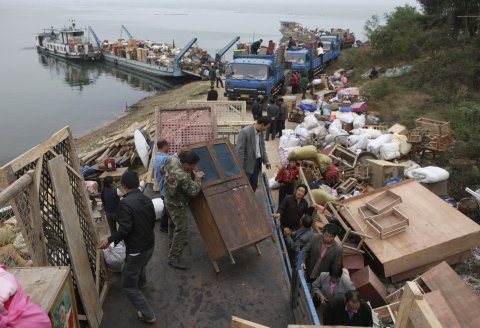
3. THE YANGTZE PROBLEM
There are dozens of potential dam-related flashpoints around the world. The Permanent Court of Arbitration in The Hague, which handles international water disputes, says 263 river basins are contested globally. There are already more than 40,000 large dams around the world. These icons of post-war Western development irrigate millions of square miles of farmland and produce a fifth of the world's electricity through hydropower.
An area the size of California – 0.3% of the world's total land mass – has been lost to artificial reservoirs since the golden age of dam-building began in the 1950s. The number of major schemes tailed off in the 1990s, as environmental concerns grew and the economic efficiency of the largest projects was called into question. But booming demand has since dramatically revived the industry. New mega-dams are now among the largest and most expensive engineering projects on the planet.
The costliest so far is China's South-to-North Water Diversion Project, a scheme to divert the waters of the River Yangtze via dams, tunnels and three vast canals to the arid north of the country. The project is still only half finished, yet by last year had swallowed more than $79bn (€73bn). Hundreds of thousands of villagers have been forced from their homes by the project. The scheme's long-term effect on the environment and economy of the south remains uncertain.
Far to the south, meanwhile, on the River Mekong, Laos is copying China by building two major dams that could devastate not just the local economies but the lives of its downstream neighbours, Cambodia and Vietnam. The diet of some 50 million people is based on fish caught in the Mekong, which is already the most dammed river in the world.
Then there is the Rogun hydro-dam on the Amu Darya in Tajikistan which, when completed, could be 355 metres high: the tallest dam in the world. The possible effect on the Amu Darya worries downstream Uzbekistan, which has responded with sanctions and travel restrictions on the Tajiks.
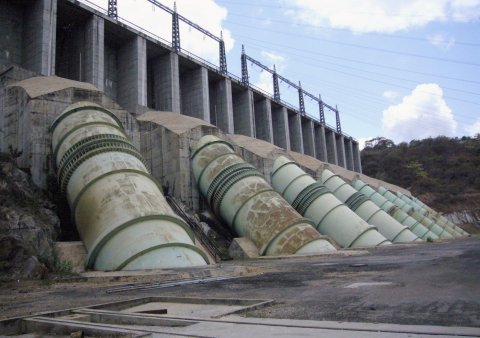
4. THE CONGO AND THE NILE
The most productive hydro-power dam, the Grand Inga, has recently been proposed for the River Congo, 225km south-west of Kinshasa. With a projected price tag of £80bn (€74bn), developers claim it will "light up Africa". Critics say that the electricity generated will mostly be transmitted to distant cities, and that the continent's poorest will see little benefit. The cost overruns in this notoriously corrupt part of the world could also end up making the South-to-North China project look cheap.
This month, Egypt and Ethiopia signed a treaty over the latter's half-built Grand Renaissance dam on the Blue Nile, which will be the largest hydro-scheme in Africa when it comes on stream in 2017. Downstream Egypt, whose development has depended on the Nile since ancient times, originally objected so strongly that in June 2013 a meeting of the cabinet of the then president, Mohammad Morsi, was caught on live television discussing ways of destroying the dam, including via covert support for anti-government rebels. Sanity seems now to have prevailed.
5. AFGHANISTAN DRIES UP
Nato's recently concluded engagement in southern Afghanistan is not normally cast as a water conflict, although that is largely what it was. Helmand, the most hotly-disputed province, was once one of Afghanistan's breadbaskets thanks to the Helmand Valley Authority, an irrigation scheme set up in the 1950s by American engineers.
But mismanagement of the scheme's 300 miles of canals, coupled with a period of protracted drought, meant that the area of irrigated land halved between 1979 and 2002. Local tribes, spurred on by the vast profits to be made from the cultivation of poppies, fought over what remained, with the Taliban exploiting the conflict.
One of the centrepieces of the HVA was the Kajaki hydro-dam, completed in 1953 by the same US firm that built the Hoover Dam on the River Colorado. The Americans returned in 2001, this time in order to bomb it.
Policy changed again in 2006, however, when Nato realised how important the dam was to regional stability. In 2008, in what proved to be the largest set-piece Nato operation of the entire Afghan war, some 5,000 Nato troops fought for six days to deliver by road a new 200-ton turbine to the plant. Seven years on, the turbine, scandalously, has still not been assembled.
6. INDIA V PAKISTAN
The territorial dispute between India and Pakistan over Kashmir – both the highest and longest-running in the world – is largely about control of the headwaters of the River Indus, on which Pakistan's agricultural economy downstream has become ever more dependent.
There are 200 million people in Pakistan: double the number 30 years ago. Yet Dutch scientists think shrinking glaciers caused by climate change could reduce the Indus by 8% by 2050.
India, which has built or proposed some 45 hydro-schemes on the Indus's upper reaches, insists that flow will never be affected. But Pakistan is as paranoid about India as Isis is about Turkey, with a long track-record of blaming India for social ills at home.
The rhetoric of extremists is already hot. Hafiz Saeed, a militant linked to the Mumbai hotel atrocity of 2008, has spoken in the past of India's "water terrorism", and campaigned under slogans like "Water flows, or blood". Could diminishing water supply push these nuclear-armed neighbours towards a new war?
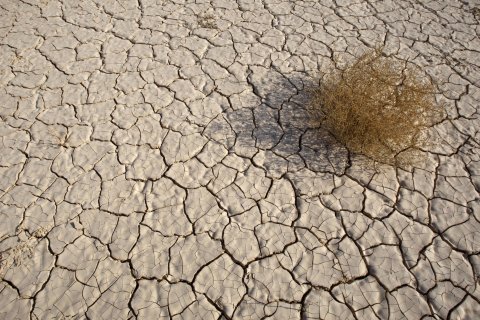
7. ISRAEL V PALESTINE
Finally, there is Israel and Palestine, arguably the grand-daddy of all water conflicts. Israel, a state founded on Ben-Gurion's dream of "making the desert bloom", diverted the River Jordan half a century ago, east and southwards towards the Negev desert, via a canal called the National Water Carrier.
The Dead Sea has lost a third of its surface area as a direct consequence, and the River Jordan of biblical antiquity has become a muddy trickle in a ditch. The reason Israel still occupies the Golan Heights, captured from Syria in the Six-Day War of 1967, is because that is where the Jordan rises.
All this has come at the expense of the Palestinians, who accuse Israel of manipulating water supply to suppress them. Some 85% of all the water in the West Bank goes to Israel, according to some estimates. The Palestinian Water Authority says that Israelis consume seven times more water, per capita, than Palestinians: a spur, if ever there was one, for a resumption of the Intifada.
Elsewhere in the world, even the hottest conflicts over water supply have been resolved through negotiation. But with the recent re-election of Benjamin Netanyahu, who campaigned on the outright rejection of a two-state solution to the region's troubles, the prospect of a fairer water-sharing arrangement for Palestine look more remote than ever.



